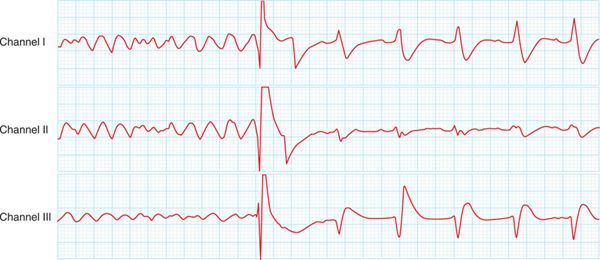FIGURE 60-1 Ambulatory ECG while patient was at the hospital cardiac rehabilitation unit for therapy shows the sudden onset of ventricular fibrillation.
FIGURE 60-2 Ambulatory ECG shows successful external cardioversion to a slower and more stable rhythm.
EXPERT OPINION
• Patients who have had a recent MI are at high risk for sudden cardiac death, particularly if their EF is low.1
• The potential cardiac causes of sudden death following MI include:
 Recurrent ischemia
Recurrent ischemia
 Cardiac rupture
Cardiac rupture
 Tachyarrhymias (ie, ventricular tachycardia [VT] and VF)
Tachyarrhymias (ie, ventricular tachycardia [VT] and VF)
 Bradyarrhythmias (ie, complete heart block)
Bradyarrhythmias (ie, complete heart block)
• Tachyarrhymias and bradyarrhythmias could be secondary to recurrent ischemia.
• Typically, VF or polymorphic VT is due to recurrent ischemia or cardiac rupture while monomorphic VT is due to a reentrant circuit from the MI scar.
• In the absence of evidence for cardiac rupture, the management of post-MI patients with syncope or life-threatening arrhythmias typically begins with ruling out recurrent ischemia, especially when the presenting rhythm is VF or polymorphic VT.
PATHOPHYSIOLOGY AND MANAGEMENT
• The patient had two more episodes of VF requiring external cardioversion in the CCU.
• Troponin was found to be positive.
• Emergent cardiac catheterization found a stenosis at the anastomosis of the LIMA to the LAD, which was opened by PTCA. The vessel was considered too small and tortuous for stent delivery.
• Echo following VF arrest showed an EF of 30% and no thrombus.
Stay updated, free articles. Join our Telegram channel

Full access? Get Clinical Tree



